107 years of Balfour Declaration that paved way for extermination of Palestinians
By Humaira Ahad
Israel's genocidal war on Gaza — now in its 393rd day — has claimed the lives of at least 43,314 Palestinians in the Gaza Strip, most of them children and women, and wounded more than 102,019 others with many more still trapped under the rubble and unaccounted for.
The no-holds-barred war, launched on October 7 last year, completed its one year last month.
The war against Palestinians, however, did not start 13 months ago. It’s rooted in history, in the usurpation of their land, destruction of their homes, denial of their rights, and ethnic cleansing.
The occupation and apartheid are rooted in the November 1917 Balfour Declaration.
In 1917, then-British foreign secretary Arthur Balfour addressed a letter to Lionel Walter Rothschild, a figurehead of the British Zionist community, on the establishment of a “Jewish land” in Palestine.
The contents of the letter, drafted on November 2, 1917, came to be known as the Balfour Declaration.
The declaration was made during World War 1 (1914-1918) and formed an important part of the British mandate after the fall of the Ottoman Empire.
The letter sealed the fate of Palestinians and opened a chapter marked by occupation and apartheid, which continues today as the Israeli regime, backed by its Western allies, continues to massacre Palestinians in both Gaza and the occupied West Bank.
History of the Balfour Declaration
Awni Abd al-Hadi, a noted Palestinian political figure, writes in his memoirs that the declaration was made by an English foreigner who had no claim to Palestine, to a foreign Jew who had no right to it.
After World War I, under a controversial system, the countries that faced defeat during the war had to hand over the territories they controlled to the states that emerged victorious.
It is believed that this system aimed to allow the winning states to administer the newly emerging countries until they could become independent.
However, the mandate system was not followed in the case of Palestine, rather a very strange and deeply controversial decision was taken concerning the Palestinian territory.
Israel’s 2023 Gaza genocide has roots in 1917 Balfour Declaration#GazaGenocide pic.twitter.com/uIXAmxFMGQ
— Press TV 🔻 (@PressTV) November 3, 2023
The Balfour Declaration emerged as a public pledge to establish “a state for Jews” in Palestine.
The British government declared that it aimed to establish a “Jewish National home” in Palestine at a time when Jews did not constitute even 10 percent of the total population of the Palestinian state.
The earlier drafts of the controversial declaration even used the phrase “the reconstitution of Palestine as a Jewish State”, clearly signaling the plan of ethnic cleansing of Palestinians by the British state.
In 1920, the third Palestinian Congress in Haifa rejected the British government’s Zionist project and called the declaration a violation of international law and the rights of native Palestinians.
The British disregarded the declaration of the Palestinian Congress and in 1922 Arthur Balfour and then British Prime Minister David Lloyd George held a meeting with Zionist leader Chaim Weizmann announcing that the Balfour Declaration “always meant an eventual Jewish state”.
The plan was implemented and Britain began to facilitate the immigration of Jews to Palestine. Between 1922 and 1935, the Jewish population saw a rise of 27 percent from a mere 9 percent before 1922.
Years following the Balfour Declaration
With the Palestinian land being illegally and forcibly confiscated by the British and handed over to the Zionist settlers, tensions rose leading to the Arab Revolt from 1936 to 1939.
In 1939, a general strike was called in Palestine in protest against British colonialism and illegal Jewish immigration. The month-long strike was followed by a British crackdown on Palestinians.
After that, the world saw Palestinian homes being demolished and their lands being usurped in line with the plan orchestrated by the British as a favor to Zionist lobbies in the West.
By the end of 1939, Britain and allied Zionist groups started a full-fledged campaign of crushing Palestinians. Villages were destroyed, curfews were imposed, and thousands were killed, injured and put behind bars to pave the ground for the establishment of the Zionist entity.
Zionist terrorist groups like Haganah, Lehi and Irgun worked under the British-led umbrella organization dubbed “counterinsurgency force”. Later, these groups formed the Israeli military force.
Britain’s 1917 Balfour Declaration has made the country morally responsible for the current genocide in Gaza, and it’s doubling down with its full support for the Israeli regime, says @DerbyChrisW. pic.twitter.com/XvtgT63FDG
— Press TV 🔻 (@PressTV) November 3, 2023
In 1947, until the United Nations passed the so-called “Resolution 181” calling for the partition of the state of Palestine, Jews were a non-entity in what eventually became the occupied territories.
“Resolution 181” was passed by the end of World War II and stated that Palestine be divided into Arab and Jewish entities, allotting 55 percent of the total land to Jews, in breach of international law.
By the end of World War II, the British mandate in Palestine expired. They left and Zionist groups embarked on a violent expedition to expand the occupying, illegitimate entity.
Between 1947 and 1949, hundreds of Palestinian villages and towns were razed down and tens of thousands of local inhabitants were killed in a textbook example of ethnic cleansing.
Nakba or Catastrophe
Those who survived the genocidal campaign were forced to abandon their homes and belongings. Around 750,000 Palestinians left their ancestral homes. This large-scale massacre of Palestinians and their mass exodus led to “Nakba” or “catastrophe”.
Almost 78 percent of Palestinian land was illegally seized by Zionist forces and eventually on May 15, 1948, the Zionist entity formally came into existence.
This was followed by an Arab-Israel war between Egypt, Lebanon, Jordan, Syria and the Israeli regime. Gaza Strip came under the control of Egypt and Jordan took over the West Bank.
Nakba was followed by “Naksa” or “setback” when the Zionist regime occupied other parts of Palestine including the Gaza Strip, the West Bank, East Jerusalem, the Syrian Golan Heights, and the Egyptian Sinai Peninsula during the Six-Day War against the Arab states.
It was followed by the regime constructing illegal settlements in the Gaza Strip and West Bank. An apartheid system was created where illegal Jewish settlers were given all the rights and privileges whereas native Palestinians had to live under a military occupation and face discrimination.
This system of apartheid led to the first intifada in December 1987 when Palestinians rallied against the illegal occupation of Israel. The popular uprising continued for six years when the Zionist regime adopted the policy of “break their bones”, killing thousands of Palestinians.
Palestinians mark Balfour Declaration after 104 years
— Press TV 🔻 (@PressTV) November 3, 2021
Mona Kandil reports.
Follow us on Telegram: https://t.co/B3zXG73Jym pic.twitter.com/gpnW9unPDu
During the first intifada, the Gaza-based resistance group Hamas came into existence.
The second intifada came in September 2000 when Aerial Sharon, who later became the prime minister of the regime, made a provocative visit to the holy Al Aqsa Mosque.
During this time, the construction of settlements on usurped Palestinian land became rampant. Palestinian infrastructure and livelihood were destroyed. The regime pushed the original inhabitants to isolated blocks, even banning them from using regular roads.
After the second intifada ended in 2005, Israeli settlements in Gaza were dismantled and legislative elections were held for the first time in the territory in which Hamas secured a majority.
Hamas’ rise to power in Gaza and the ouster of the Zionist regime from the coastal territory led to the crippling humanitarian blockade that has only intensified over the years.
For nearly two decades, more than two million people have been reeling under the blockade.
During this period, the regime has frequently attacked the Gaza Strip. In 2008, 2012, 2014, 2021, and in 2023, thousands of Palestinians have been killed by the occupying regime.
What started with the Balfour Declaration 107 years ago continues today – the extermination of Palestinians, irrespective of gender and age.
Official: Hamas will defeat Israel in West Bank
VIDEO | Ceasefire at last: Will it hold?
VIDEO | Stirring security situation
4 Israeli settlers injured in resistance stabbing operation in Tel Aviv
Iran announces $5bn in easy loans to renewables
Iran’s president urges bolstering Azerbaijan relations
Denmark dismisses Trump’s latest Greenland claims
Netanyahu assures Smotrich of extensive attacks on West Bank: Reports


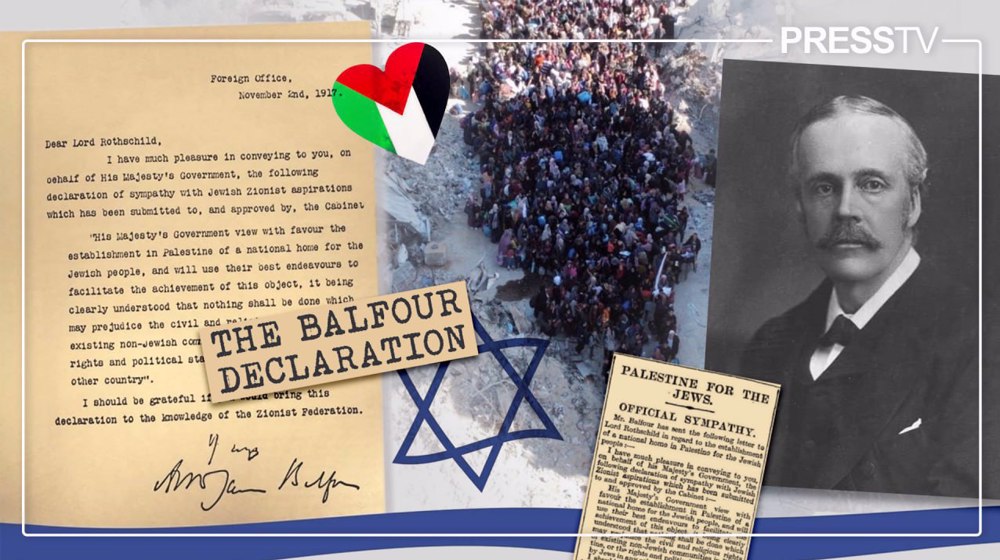
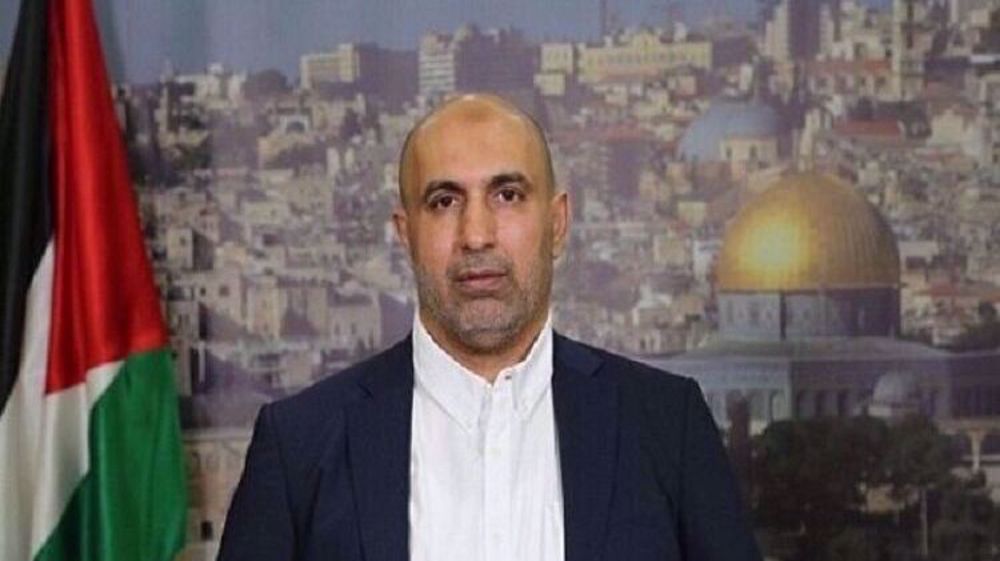
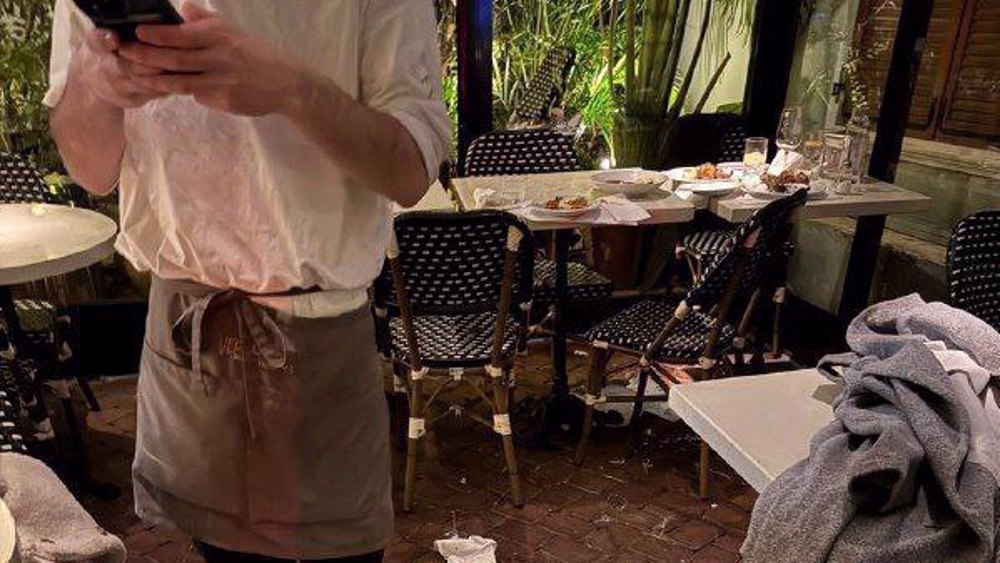
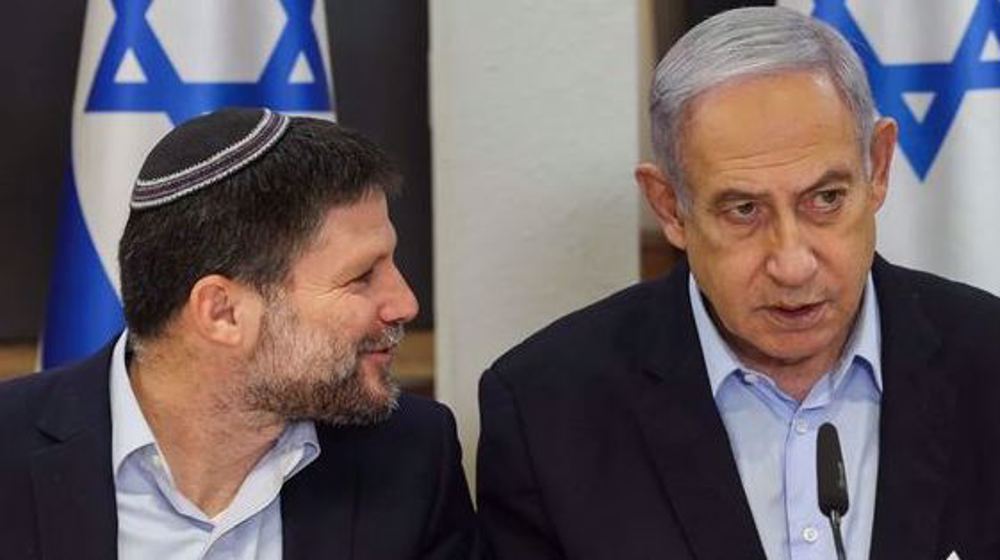



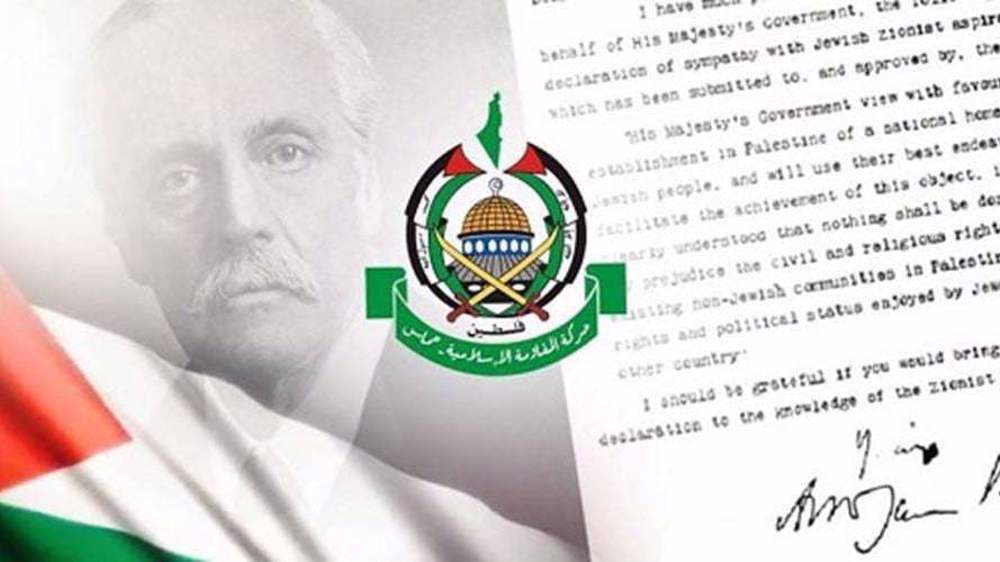
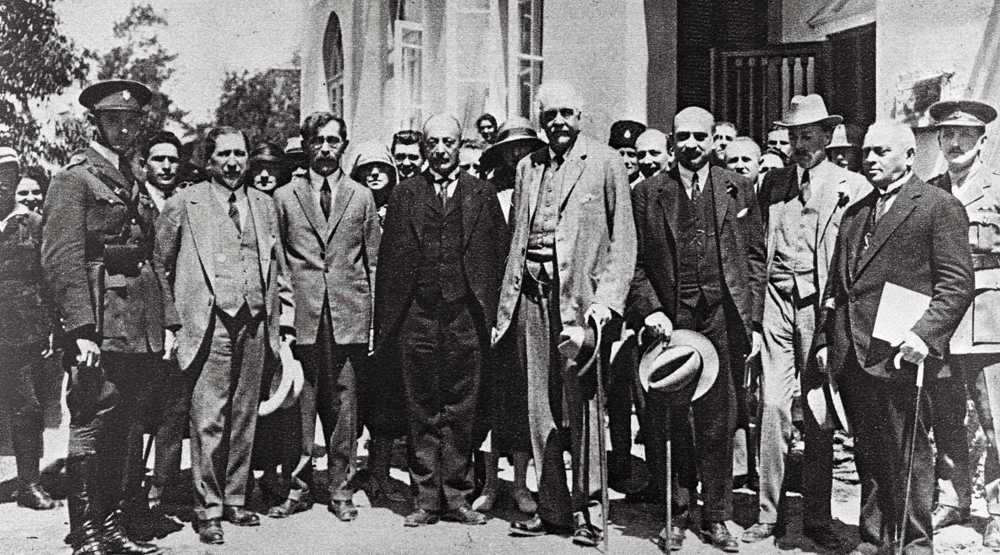
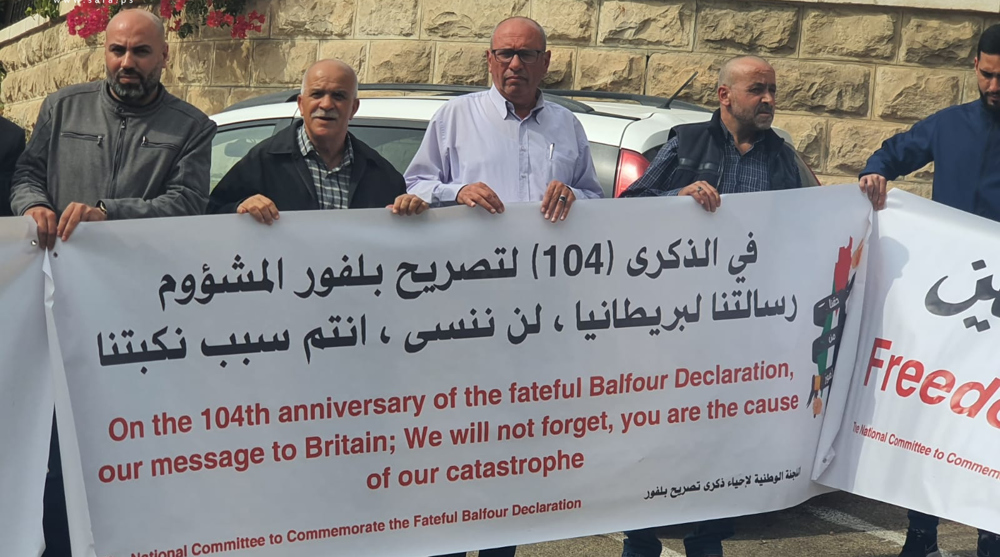
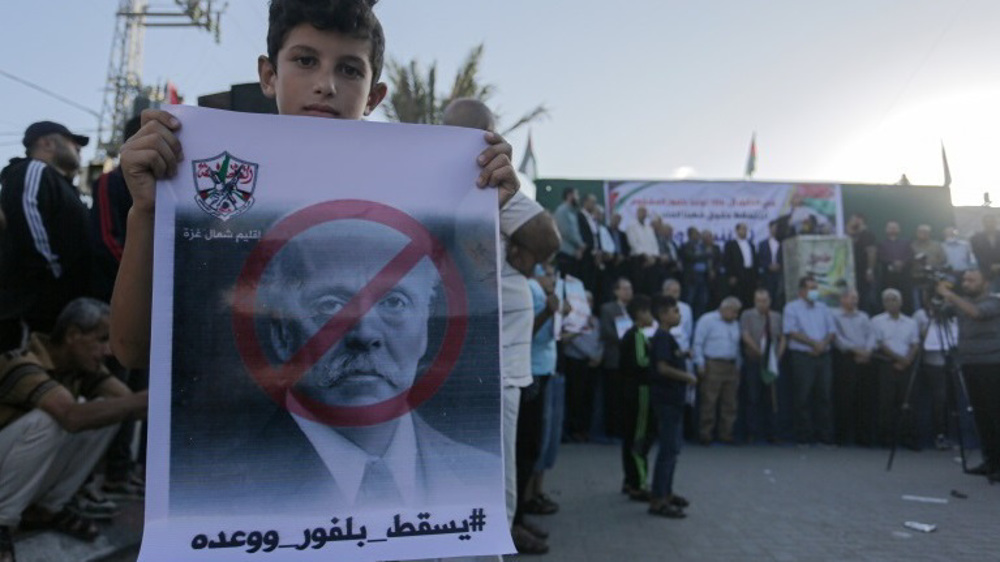


 This makes it easy to access the Press TV website
This makes it easy to access the Press TV website